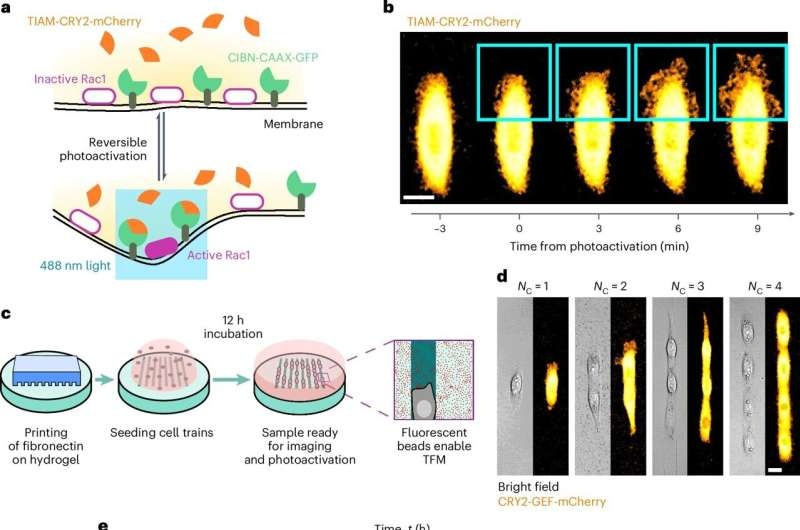A groundbreaking study from the Institute for Bioengineering of Catalonia (IBEC) has challenged the long-held belief that a single ‘leader cell’ directs the collective movement of groups of cells. Instead, the research reveals that all cells actively participate in the process, challenging our understanding of cell migration and its implications for critical physiological processes.

The Myth of the Leader Cell
It was long thought that in processes such as embryonic development, wound healing or cancer invasion, coordinated groups of cells move as so-called ‘leader-laggard collectives’: a highly mobile cell leads the way and directs locomotion to pull the whole group along. Based on the behavior of animals where a leader would guide the followers, this notion says that these leader cells become as some kind of control center and lead moves of the followers.
Nevertheless, new research from the IBEC team has now up-ended that previous assumption. By using optogenetic manipulation, the scientists created ‘leader cells’ in the laboratory and saw how they behaved collectively. The discovery is surprising because the lit-up ‘leader’ cells could not attract enough followers, which suggests that there is no single cell leading the charge. Rather every cell is a player that actively defines its velocity and acceleration.
Redefining Collective Cell Migration
The results of the IBEC study showed that cell migration was not a hierarchical process, but rather occurs by consensus. So instead of one ‘engine’ that powers the movement, individual ‘carriages’ (or cells) have their own motor and all move together in unison.
This study has broad implications for fundamental biological processes, such as invasion of tumor cells or wound healing. The treatment that involves targeting of this one ‘captain’ cell may therefore not do the trick if there is no single leader cell showing the way. Instead, the researchers predict that we will need to target the full complement of cells participating in the group movement.
Working with Ricard Alert from the Max Planck Institute for the Physics of Complex Systems in Dresden, they set out to investigate more detailed physical rules that underlie this collective cell behavior. This model gave a description of the spatial distribution of forces that cells generate and how this information is used to create their speed in migration. The new models move beyond macroscopic principles by providing a more faithful representation of the movements of cells at the microscale.
Conclusion
The results suggest a new mechanism of collective cell migration one that is non-hierarchical, without a leading “leader cell” and instead works as a team with all the cells actively participating. This is an important finding for the design of these treatments with implications in cancer invasion and would healing, because it challenges the basis of our approaches which prioritize a single ‘captain’ cell. Their new mathematical model offers a better way to understand the microscopic movement of cells and hence how cell migration works in this, the most critical process in biology.
